The future is a mix of tech and touch - so how can you find the right balance?
Contributors:
Helen Ashton, Founder, Shape Beyond
Jonathan Kestenbaum, Managing Director, AMS

In a period of just a few months, COVID-19 brought about more change to how businesses operate than the previous decade.
Lockdowns, remote working and an end to business travel forced organisations to accelerate adoption of digital practices, from online sales - ecommerce sales in the US grew by 43% in the first half of 2020 - to virtual meetings and remote onboarding.
According to a 2020 McKinsey & Company report, ‘COVID-19 pushed companies over the technology tipping point, transforming business forever’. The report surveyed almost 1,000 c-suite executives across industry, finding that companies had accelerated digitisation of customer and supply chain interaction and internal operations by three to four years, with the share of digitally enabled products in their portfolios accelerating by an unprecedented seven years.
Tech and touch
Meeting the pace of this change has required huge investment in talent and technology, but perhaps the biggest challenge has been creating the right culture, systems and processes to ensure digital advances don’t leave existing employees behind. So how can organisations get the balance of technology and touch right?
“The simple answer is to think about your people first and include them on the whole journey. In my experience of transformations, leaders come up with detailed plans and in the bottom corner you find a couple of lines on people and culture. If you don’t spend the time getting teams to understand why the business needs to transform in the first place,or involve them in the planning and testing of what is changing, then it is quite likely things will fail when you launch,” says Helen Ashton, founder of transformation consultancy Shape Beyond.
Ashton’s 25 year business career has included roles as CFO of online fashion retailer ASOS, CEO of commercial equipment company JLA and several executive positions in banking with Barclaycard and Lloyds Banking Group. Change management has been a constant throughout her career, but achieving success is not easy, particularly in digital transformations.
“When you talk about digital transformation, there are two things. One is that it can sound way more techie than it is in reality. Day-to-day, it could be about automating a process that you normally do, making the job easier. If you can align it around doing the best for the customer and making life easier, existing employees can understand and accept it.
“The second is around hiring people with specialist skillsets to create new architecture or develop new ideas. This is more tricky, as these people have lots of opportunities and can be choosy about the sort of organisation they work for, the benefits they get and the organisational culture. This is why businesses need to think about their culture. It’s not just about retaining the people you have, it’s also attracting new talent,” adds Ashton.
Hiring in a digital driven economy
However, how organisations hire this new talent has changed too. Overnight, businesses - or at least those still recruiting - had to switch to video interviewing and remote onboarding. Graduate recruitment events moved online, while some organisations focused on boosting administrative efficiency by automating parts of the hiring process, such as using chatbots to set up appointments or automating CV screening.
Now, the Great Resignation and rebounding economies has created a huge surge in recruitment, leaving talent professionals struggling to meet business demands on new hiring. The recruitment sector itself is under pressure, with the number of advertised recruiter roles soaring.
So, can talent technology help organisations get ahead?
“When you think about businesses keeping up with the pace of change, you have to stay on top of the talent acquisition technology market and how it’s changing,” says Jonathan Kestenbaum, managing director, technology strategy and partnerships at AMS.
“One of the big challenges I see is that vendors talk about features and functionality, and heads of talent talk about business problems. It’s easy to fall in love with a feature, but it might not have a business use in your organisation,” he adds.
Too often, recruitment technology fails because businesses buy products without fully understanding how they’ll incorporate them into their procedures, or how their people will use them. Without user buy-in and a strategy for deployment, technology can’t be implemented successfully.


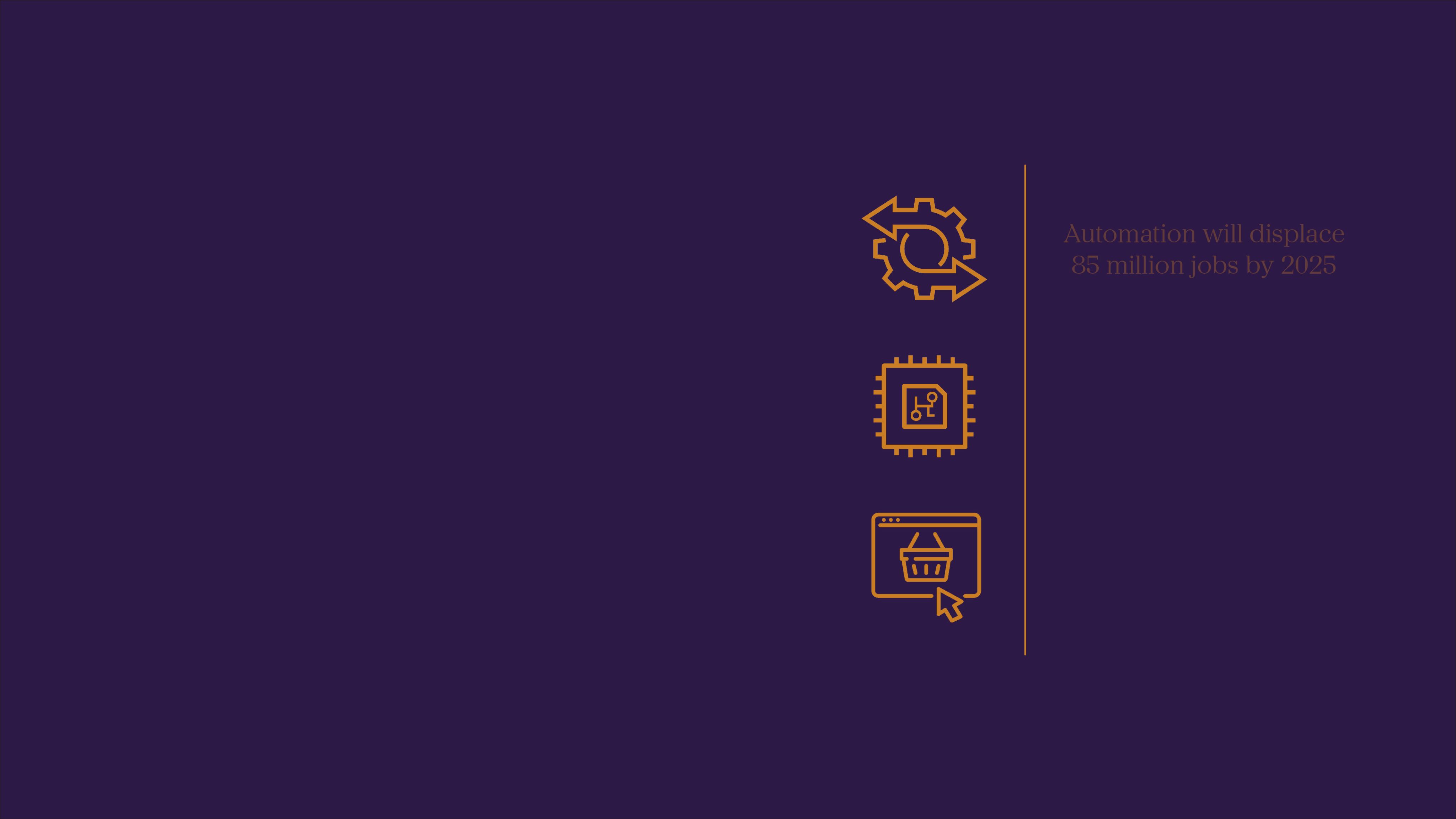
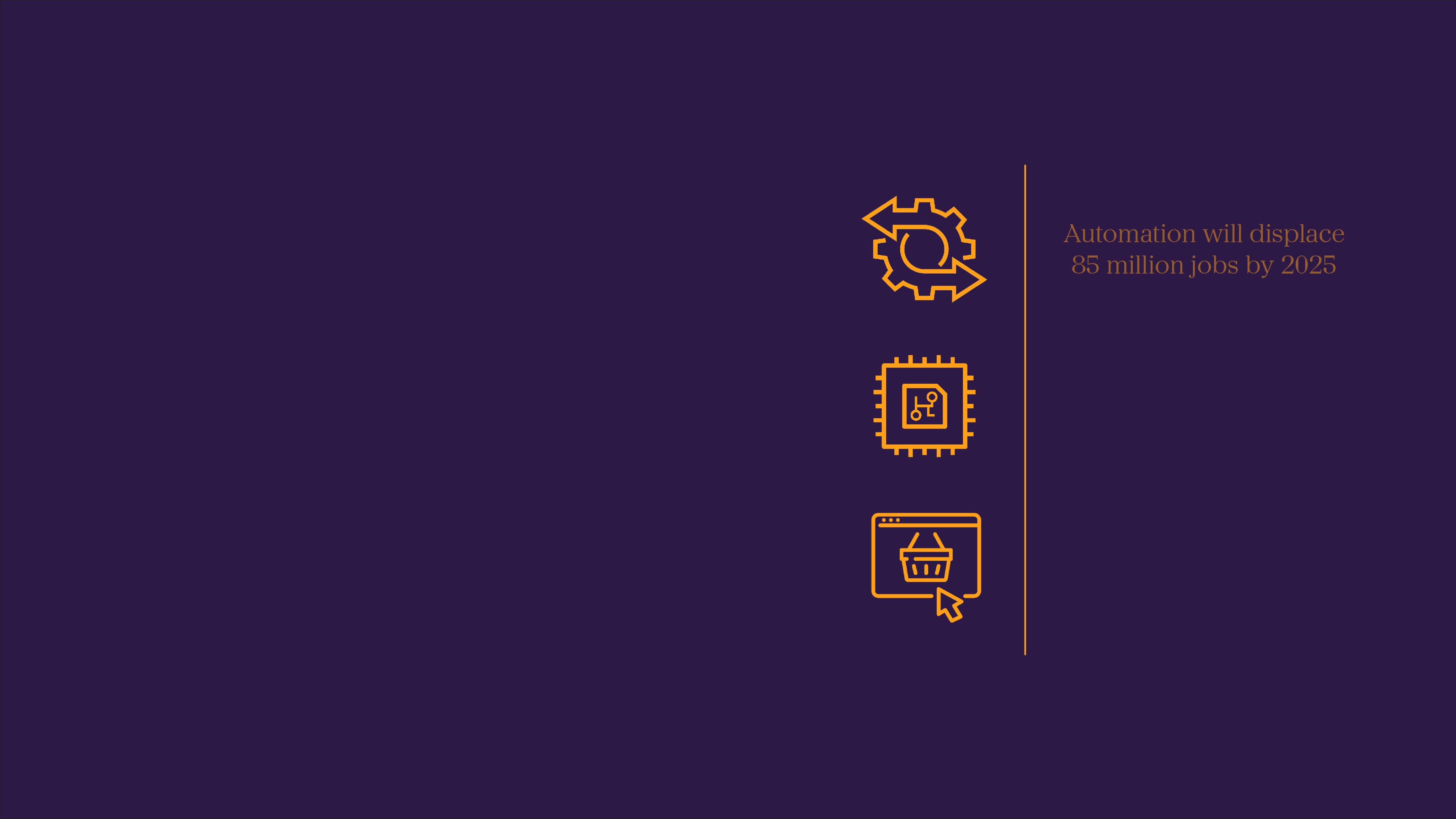
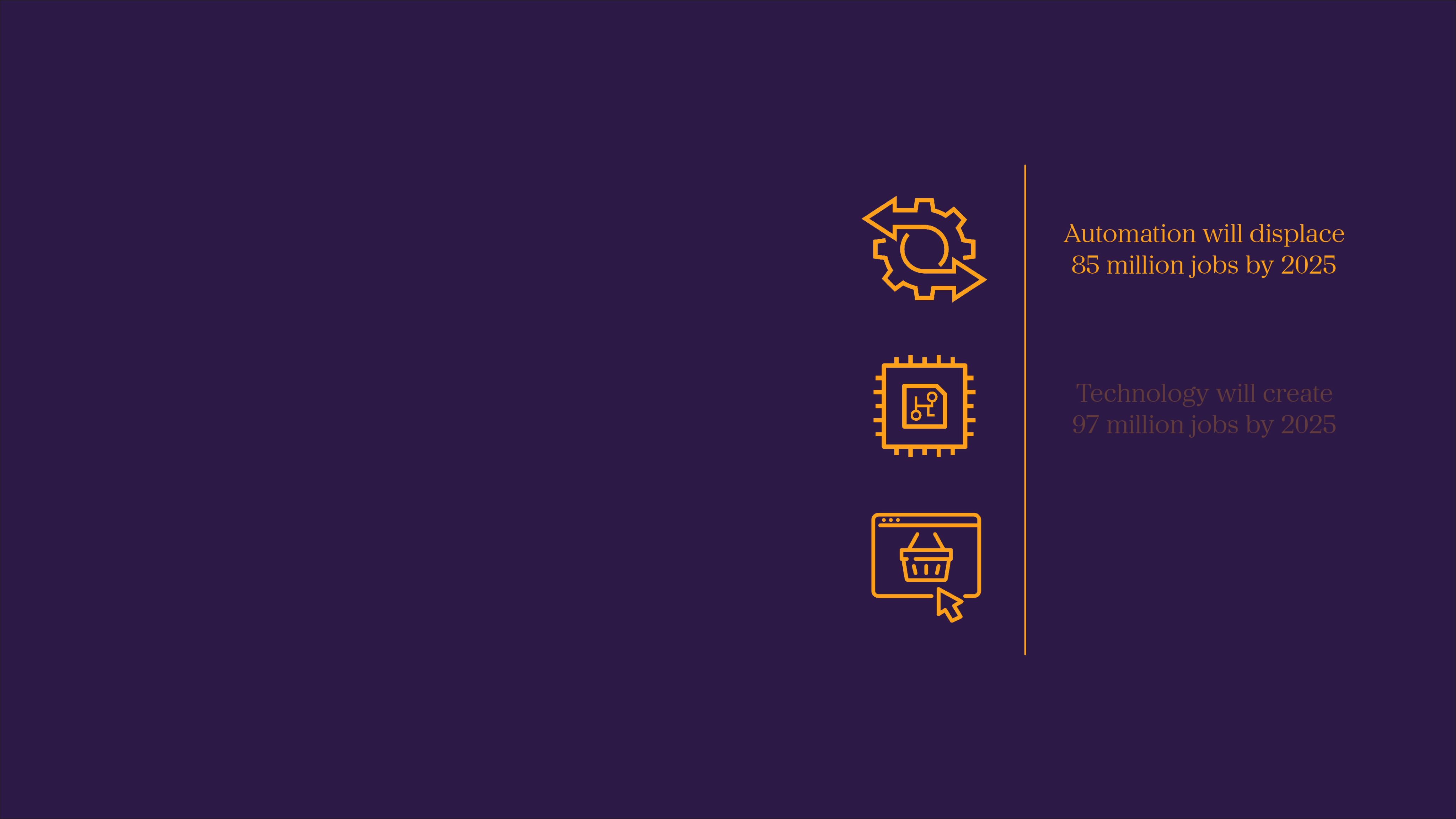
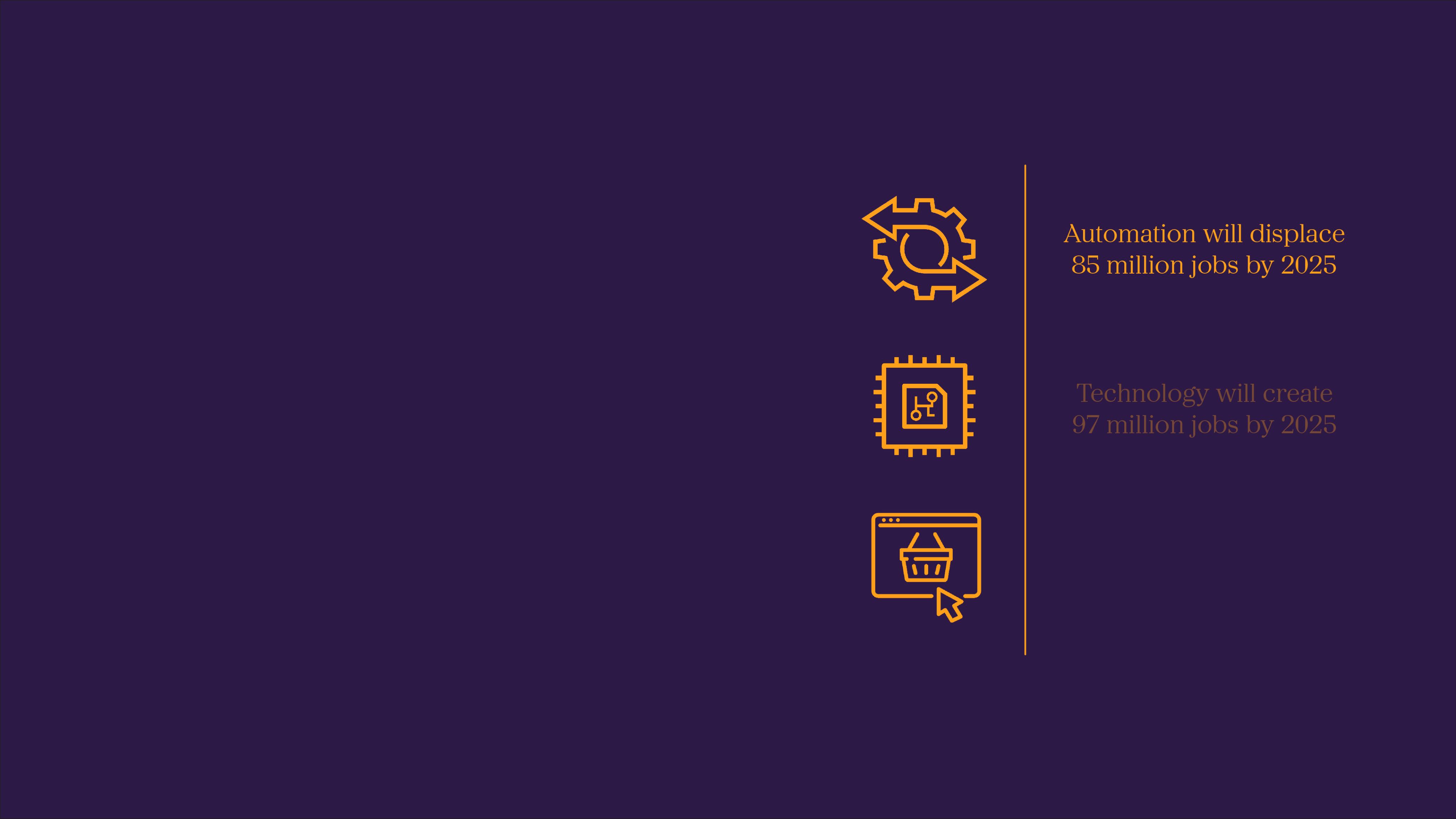
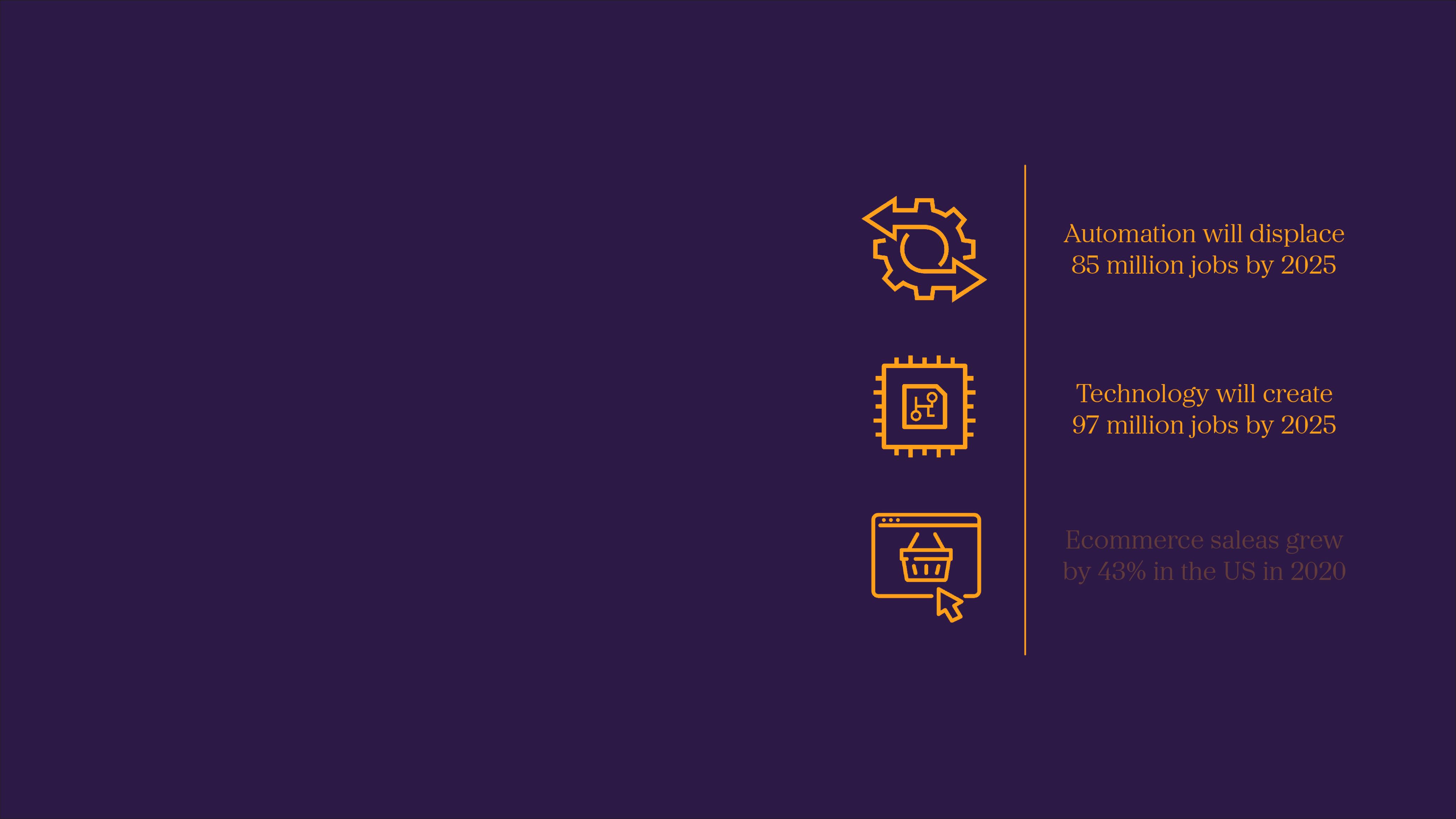
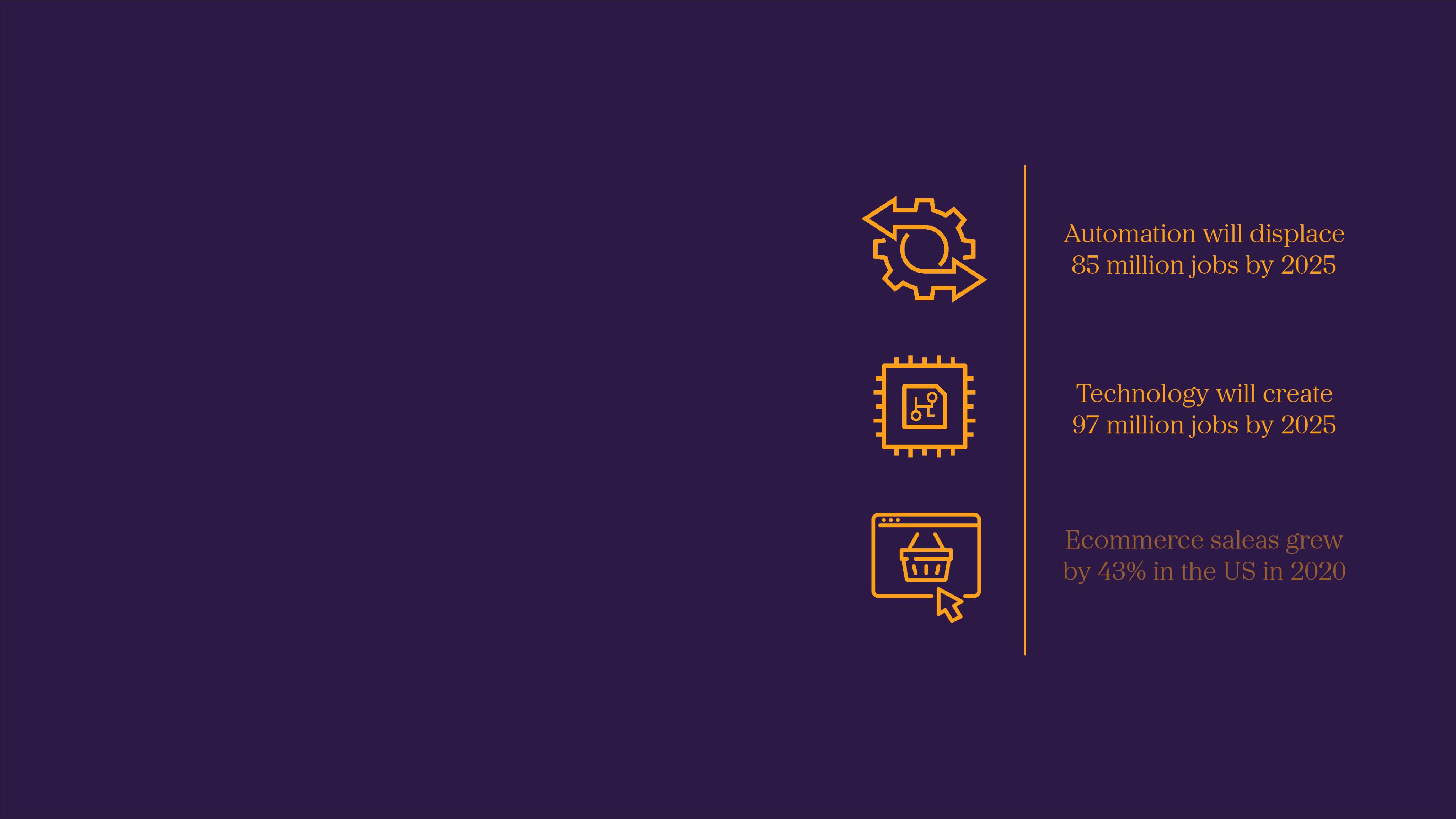
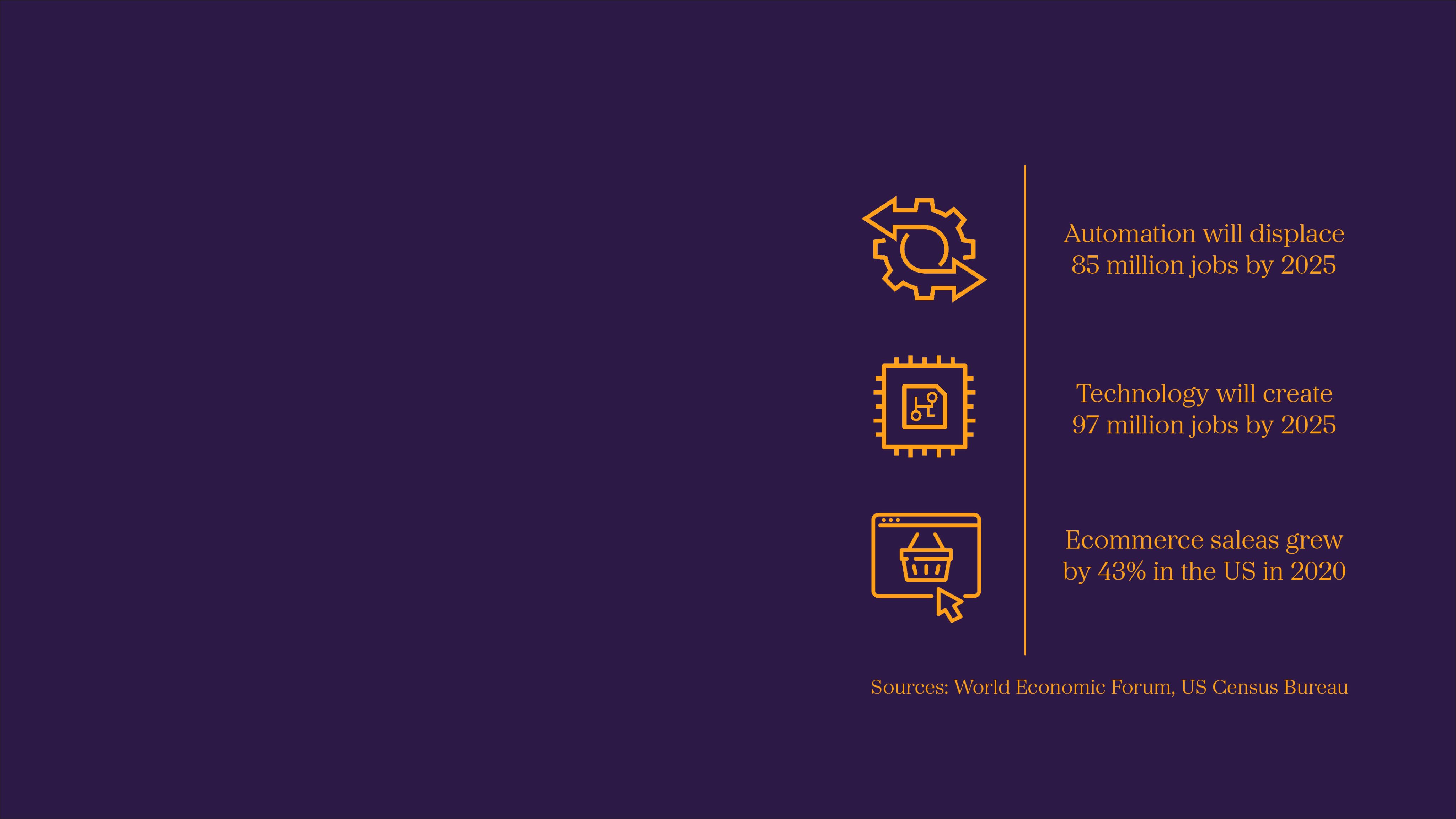
In a period of just a few months, COVID-19 brought about more change to how businesses operate than the previous decade.
Lockdowns, remote working and an end to business travel forced organisations to accelerate adoption of digital practices, from online sales - ecommerce sales in the US grew by 43% in the first half of 2020 - to virtual meetings and remote onboarding.
According to a 2020 McKinsey & Company report, ‘COVID-19 pushed companies over the technology tipping point, transforming business forever’. The report surveyed almost 1,000 c-suite executives across industry, finding that companies had accelerated digitisation of customer and supply chain interaction and internal operations by three to four years, with the share of digitally enabled products in their portfolios accelerating by an unprecedented seven years.
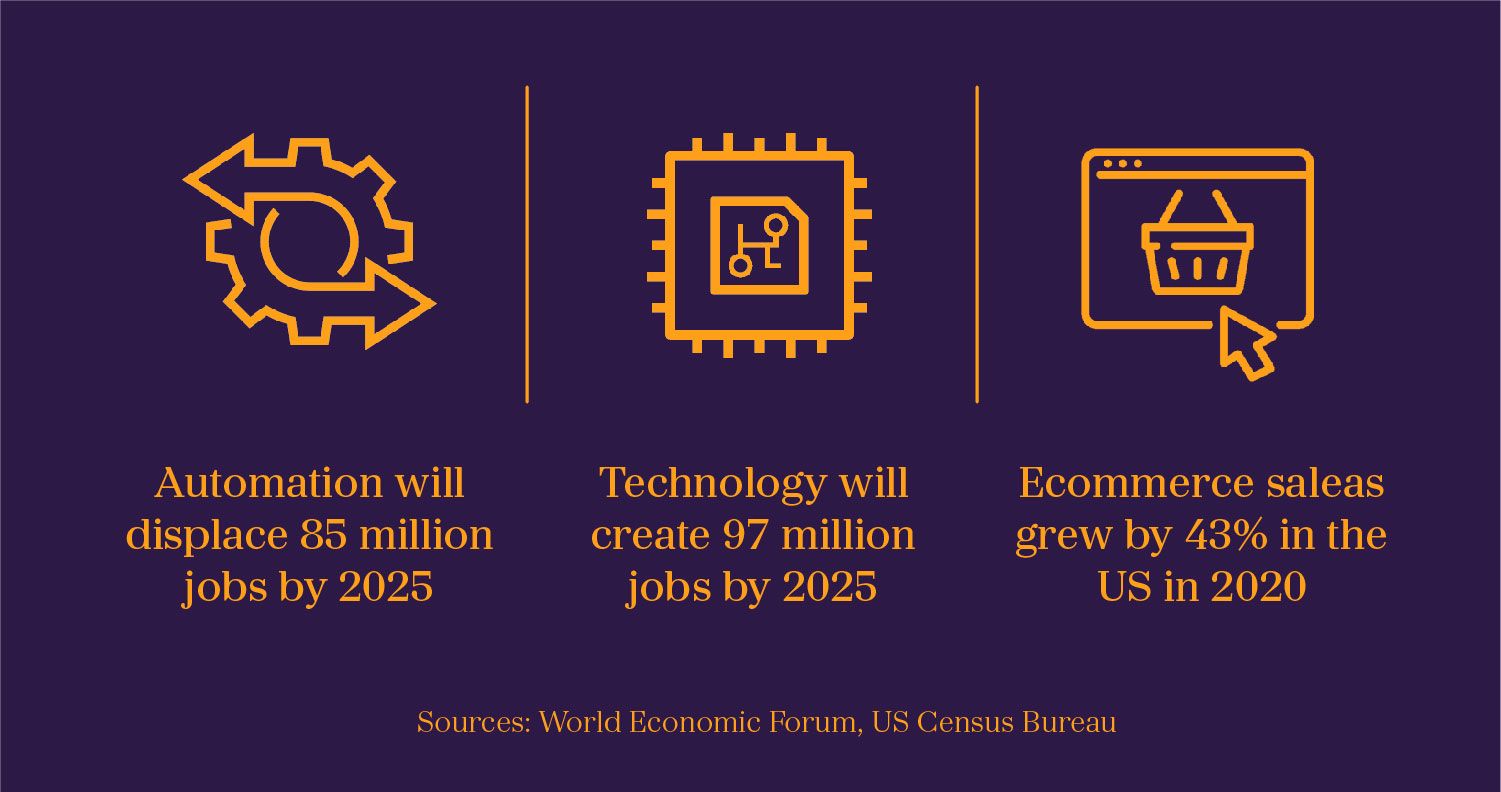
Tech and touch
Meeting the pace of this change has required huge investment in talent and technology, but perhaps the biggest challenge has been creating the right culture, systems and processes to ensure digital advances don’t leave existing employees behind. So how can organisations get the balance of technology and touch right?
“The simple answer is to think about your people first and include them on the whole journey. In my experience of transformations, leaders come up with detailed plans and in the bottom corner you find a couple of lines on people and culture. If you don’t spend the time getting teams to understand why the business needs to transform in the first place,or involve them in the planning and testing of what is changing, then it is quite likely things will fail when you launch,” says Helen Ashton, founder of transformation consultancy Shape Beyond.
Ashton’s 25 year business career has included roles as CFO of online fashion retailer ASOS, CEO of commercial equipment company JLA and several executive positions in banking with Barclaycard and Lloyds Banking Group. Change management has been a constant throughout her career, but achieving success is not easy, particularly in digital transformations.
“When you talk about digital transformation, there are two things. One is that it can sound way more techie than it is in reality. Day-to-day, it could be about automating a process that you normally do, making the job easier. If you can align it around doing the best for the customer and making life easier, existing employees can understand and accept it.
“The second is around hiring people with specialist skillsets to create new architecture or develop new ideas. This is more tricky, as these people have lots of opportunities and can be choosy about the sort of organisation they work for, the benefits they get and the organisational culture. This is why businesses need to think about their culture. It’s not just about retaining the people you have, it’s also attracting new talent,” adds Ashton.
Hiring in a digital driven economy
However, how organisations hire this new talent has changed too. Overnight, businesses - or at least those still recruiting - had to switch to video interviewing and remote onboarding. Graduate recruitment events moved online, while some organisations focused on boosting administrative efficiency by automating parts of the hiring process, such as using chatbots to set up appointments or automating CV screening.
Now, the Great Resignation and rebounding economies has created a huge surge in recruitment, leaving talent professionals struggling to meet business demands on new hiring. The recruitment sector itself is under pressure, with the number of advertised recruiter roles soaring.
So, can talent technology help organisations get ahead?
“When you think about businesses keeping up with the pace of change, you have to stay on top of the talent acquisition technology market and how it’s changing,” says Jonathan Kestenbaum, managing director, technology strategy and partnerships at AMS.
“One of the big challenges I see is that vendors talk about features and functionality, and heads of talent talk about business problems. It’s easy to fall in love with a feature, but it might not have a business use in your organisation,” he adds.
Too often, recruitment technology fails because businesses buy products without fully understanding how they’ll incorporate them into their procedures, or how their people will use them. Without user buy-in and a strategy for deployment, technology can’t be implemented successfully.

99% of the time when technology fails is when you don’t change your process and people around it.
It’s all about taking your people with you.


Kestenbaum’s team supports organisations through the entire technology adoption process, from identifying the right product through implementation and optimisation. The starting point for all businesses should be to understand their own strategic needs and transformation journey.
“What do you need to focus on next? What type of organisation are you and where are you on your digital transformation journey? Disney has very different talent acquisition challenges to Deloitte, so it’s about understanding your own brand and requirements and not looking to others,” says Kestenbaum.
“Secondly, it’s about tying technology to key performance indicators and measuring against that. Will the technology decrease my time to hire? Will it improve diversity and inclusion? Will it increase the quality of candidates? These are the questions you need to ask,” he adds.
Culture or computers?
Ultimately, the success or not of digital transformations and technology adoptions depends on the culture of the company using it and the employees leading it. Like Ashton, Kestenbaum believes that taking your people with you on that journey - and empowering them to lead it - is key. Technology is a people enabler, not the other way round.
“99% of the time when technology fails is when you don’t change your process and people around it. It’s all about taking your people with you,” he says.
So, are the robots taking over? Not quite. Back in 2020, the World Economic Forum predicted that automation would displace 85 million jobs by 2025 - but that technology would create an extra 97 million jobs over the same period. The pandemic might have accelerated the pace of digital change, but human skills and qualities remain very much the future of work.
“We fundamentally believe that the future will be a combination of tech and touch,” says Kestenbaum.
“Technology will not replace people - but it will make them more strategic. Technology will compute and people will engage, allowing us to have deeper, more meaningful conversations.”
written by the Catalyst Editorial Board
with contributions from:
Helen Ashton
Founder, Shape Beyond
Jonathan Kestenbaum
Managing Director, AMS

Kestenbaum’s team supports organisations through the entire technology adoption process, from identifying the right product through implementation and optimisation. The starting point for all businesses should be to understand their own strategic needs and transformation journey.
“What do you need to focus on next? What type of organisation are you and where are you on your digital transformation journey? Disney has very different talent acquisition challenges to Deloitte, so it’s about understanding your own brand and requirements and not looking to others,” says Kestenbaum.
“Secondly, it’s about tying technology to key performance indicators and measuring against that. Will the technology decrease my time to hire? Will it improve diversity and inclusion? Will it increase the quality of candidates? These are the questions you need to ask,” he adds.
Culture or computers?
Ultimately, the success or not of digital transformations and technology adoptions depends on the culture of the company using it and the employees leading it. Like Ashton, Kestenbaum believes that taking your people with you on that journey - and empowering them to lead it - is key. Technology is a people enabler, not the other way round.
“99% of the time when technology fails is when you don’t change your process and people around it. It’s all about taking your people with you,” he says.
So, are the robots taking over? Not quite. Back in 2020, the World Economic Forum predicted that automation would displace 85 million jobs by 2025 - but that technology would create an extra 97 million jobs over the same period. The pandemic might have accelerated the pace of digital change, but human skills and qualities remain very much the future of work.
“We fundamentally believe that the future will be a combination of tech and touch,” says Kestenbaum.
“Technology will not replace people - but it will make them more strategic. Technology will compute and people will engage, allowing us to have deeper, more meaningful conversations.”
written by the Catalyst Editorial Board
with contributions from:
Helen Ashton
Founder, Shape Beyond
Jonathan Kestenbaum
Managing Director, AMS

